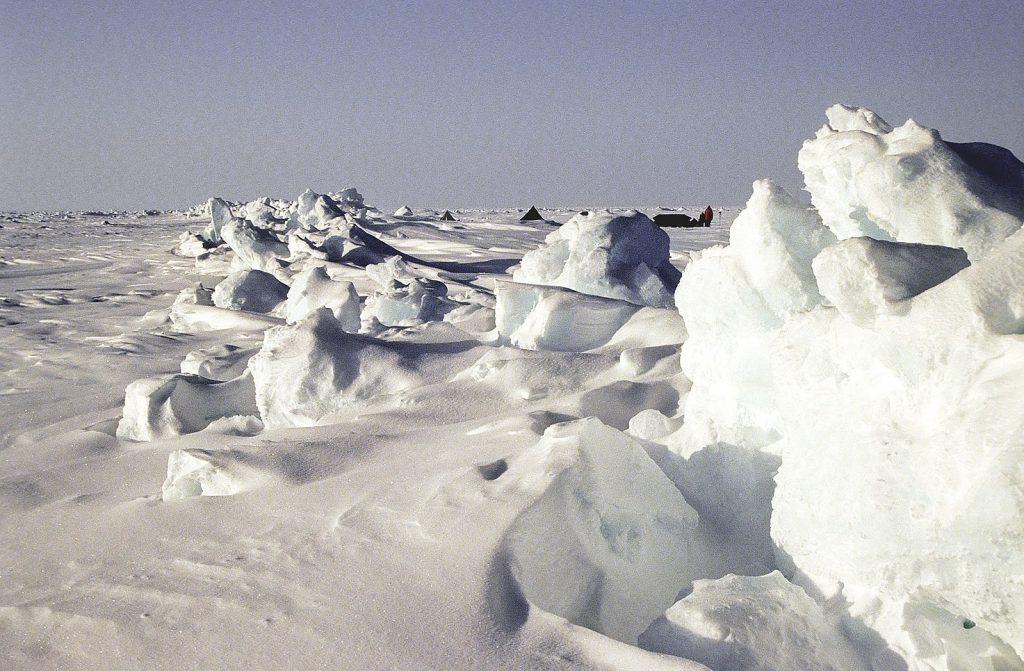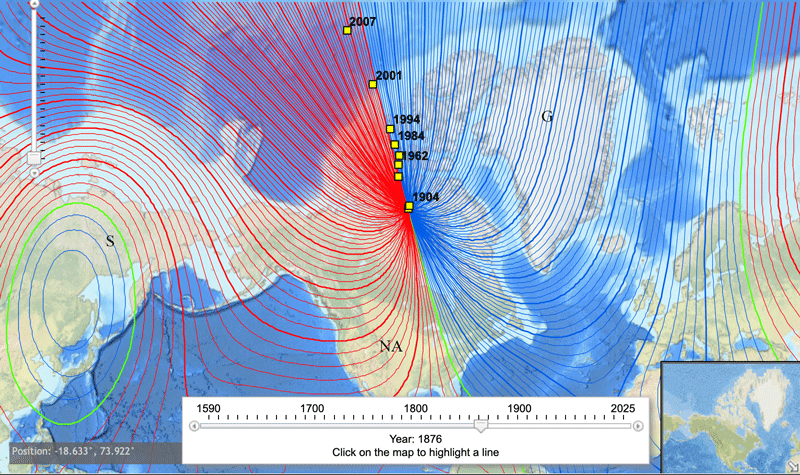
Let’s begin our exploration of the North with the description I wrote for this quadrant on the page about the Circle in the Weaving section:
“Winter’s north winds bring snow and deep silence to the land. Some creatures burrow down beneath the frost and sleep, others migrate south. Grasses die and wither, and hardwood trees drop their leaves and go dormant. These are times of deep quiet, of rest and renewal, of death in which new life stirs unseen — seeds in frozen ground beneath the snow. In this silence, stories grow like flames of a warming fire and are shared from person to person as they gather indoors. Dreams fall like flakes of snow onto the shelter over a human heart. The color is white.”
Perhaps the first thing that strikes you as you read these words beneath a photograph of the ice at the earth’s geographic North Pole is a sense of irony or loss, or at least of dissonance. The frozen landscape that made reaching the North Pole an attractively heroic adventure to white men of Europe and North America in the 19th and early 20th century is now melting and breaking apart. So with the very first step of our journey into North, we encounter enormous paradox that seems more typical of West than of North. The North itself, it seems, has been seized by global warming* and is being changed beyond recognition in ways that leave us literally without a compass to guide us.
For, at the same time the ice is melting, magnetic north itself has begun to wander as if even that definition of “north” no longer has meaning. The yellow squares on the NOAA diagram below show how the magnetic north pole moved between 1904 and 2007. It seems to be moving at about 55 km per year right now, and as of 2020 is at 86.50°N and 164.04°E, approaching far northern Russia and Siberia. It has moved from a location south of the geographic North Pole and in the Western hemisphere, up over the top of “north”, and is now heading southward in the Eastern hemisphere.

So you might wonder what wisdom, if any, North really bring us in these times. Is its wisdom dependent on cold and snow, or on the axis around which the earth rotates? Or does it bring us a wisdom that transcends both geography and weather?
Since we came here from West, what we’ll do is ride that quadrant’s power of paradox like a horse, right into the North to see where it can take us. Since global warming is the thing that stands so completely opposite our usual images of the North Pole and the Arctic, let’s begin there. Please go to the next page, CO2 solutions.
——
*I realize the term “climate change” is generally considered the more acceptable term, but I want to point out the very real paradox of warming that is, in fact, melting both artic and antarctic regions. Warming of seas and atmosphere causes more extreme weather of all kinds, including (sometimes) blizzards. It’s true a lot of people who don’t understand this correlation point to extreme winter weather events as “proof” global warming or climate change is not happening. But I doubt you deny climate change or global warming, either one, given that you’re reading this exercise. So my priority is addressing the real power moving in the world at this time. And that power is warming the North in such a way as to destroy the features we usually associate with it. A paradox that big has enough signifance that we need to pay attention to it.
